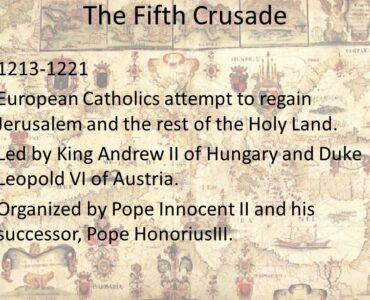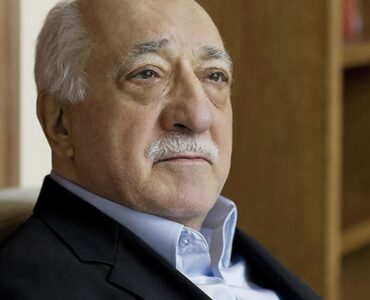
The Lesser Crusades
The Fifth Anti-Hussite Crusade
On 1 August 1431 a large army of crusaders under Frederick I, Elector of Brandenburg, accompanied by Cardinal Cesarini as papal legate, crossed the Bohemian border. On 8 August the crusaders reached the city of Domažlice and began besieging it. On 14 August, a Hussite relief army arrived, reinforced with some 6,000 Polish Hussites and under the command of Prokop the Great, and it completely routed the crusaders at the resulting
The moderate party thus obtained the upper hand; and wanted to find a compromise between the council and the Hussites. It formulated its demands in a document which was finally accepted by the Church of Rome in a slightly modified form, and which is known as ‘the compacts.’ The compacts, mainly founded on the articles of Prague, declare that:
The Holy Sacrament is to be given freely in both kinds to all Christians in Bohemia and Moravia, and to those elsewhere who adhere to the faith of these two countries;
All mortal sins shall be punished and extirpated by those whose office it is so to do;
The word of God is to be freely and truthfully preached by the priests of the Lord, and by worthy deacons;
The priests in the time of the law of grace shall claim no ownership of worldly possessions;
On 5 July 1436 the compacts were formally accepted and signed at Jihlava (Iglau), in Moravia, by King Sigismund, by the Hussite delegates, and by the representatives of the Roman Catholic Church. The latter, however, refused to recognize John of Rokycan as archbishop of Prague, who had been elected to that dignity by the estates of Bohemia.
Aftermath
The Utraquist creed, frequently varying in its details, continued to be that of the established church of Bohemia until all non-Catholic religious services were prohibited shortly after the Battle of the White Mountain in 1620. The Taborite party never recovered from its defeat at Lipany, and after the town of Tábor had been captured by George of Poděbrady in 1452, Utraquist religious worship was established there. The Bohemian Brethren (Unitas Fratrum), whose intellectual originator was Petr Chelčický but whose actual founders were Brother Gregory, a nephew of Archbishop Rokycany, and Michael, curate of Žamberk, to a certain extent continued the Taborite traditions, and in the 15th and 16th centuries included most of the strongest opponents of Rome in Bohemia.
J. A. Komenský (Comenius), a member of the Brethren, claimed for the members of his church that they were the genuine inheritors of the doctrines of Hus. After the beginning of the German Reformation, many Utraquists adopted to a large extent the doctrines of Martin Luther and of John Calvin and, in 1567, obtained the repeal of the Compacts which no longer seemed sufficiently far-reaching. From the end of the 16th century the inheritors of the Hussite tradition in Bohemia were included in the more general name of “Protestants” borne by the adherents of the Reformation.
At the end of the Hussite Wars in 1431, the lands of Bohemia had been totally ravaged. The adjacent Bishopric of Würzburg in Germany was left in such bad shape after the Hussite Wars, that the impoverishment of the people was still evident in 1476. The poor conditions contributed directly to the peasant conspiracy that broke out that same year in Würzburg.
The Lesser Crusades: The Fifth Anti-Hussite Crusade
802 – 041
https://discerning-Islam.org
Last Updated: 02/2022
See COPYRIGHT information below.



